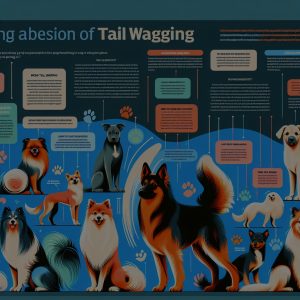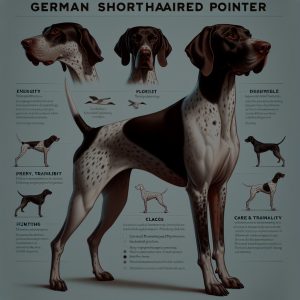
Beagle dogs are one of the most popular and beloved breeds around the world, known for their friendly personality, intelligence, and distinctive appearance. This comprehensive guide aims to provide a deep understanding of Beagle dogs, covering their history and origin, physical characteristics and traits, temperament and behavior, and essential training and socializing tips. Whether you’re a prospective Beagle owner or simply a canine enthusiast, this guide will equip you with valuable insights about this remarkable breed.
History and Origin of Beagle Dogs
The history of Beagle dogs dates back to ancient times, with their origins rooted in the hound breeds of ancient Greece. These early hounds were utilized by hunters for their exceptional tracking abilities and keen sense of smell. The modern Beagle, as we know it today, began to take shape in the 19th century in Great Britain, where breeders refined the breed to enhance its hunting skills and create a compact, efficient scent hound.
The breed name "Beagle" is believed to have been derived from the French word "begueule," meaning "open throat," a nod to their characteristic vocalizations. Beagle popularity skyrocketed in England during the reign of King Henry VIII and Queen Elizabeth I, both of whom were avid hunters and kept packs of Beagles. The dogs were prized for their ability to track game such as rabbits and hares over various terrains.
In the mid-19th century, Beagles made their way to the United States, where they quickly gained popularity for their hunting prowess and amiable nature. The American Kennel Club (AKC) officially recognized the breed in 1885. Today, Beagles are cherished not only as hunting companions but also as family pets and service dogs, thanks to their versatility and endearing personality.
Physical Characteristics and Traits of Beagles
Beagles are small to medium-sized dogs with a sturdy, compact build that makes them well-suited for both hunting and companionship. They typically weigh between 20 to 30 pounds and stand about 13 to 15 inches tall at the shoulder. Their short, dense coat comes in a variety of colors, including tricolor (black, white, and tan), red and white, lemon, and bluetick, contributing to their distinctive and appealing appearance.
One of the most recognizable features of Beagles is their large, expressive brown or hazel eyes, which convey a sense of curiosity and warmth. Their ears are long, floppy, and set low on the head, giving them an endearing look that is hard to resist. The breed also boasts a strong, straight back and a tail that is carried high and often has a white tip, which helps hunters spot them in the field.
Beagles possess a remarkable sense of smell, thanks to their approximately 220 million scent receptors, compared to around 5 million in humans. This olfactory prowess makes them exceptional scent hounds, capable of tracking scents over long distances. Their compact size, combined with their extraordinary scenting ability, makes them ideal for various roles, from hunting to search and rescue missions.
Temperament and Behavior of Beagle Dogs
Beagles are renowned for their friendly, affectionate, and outgoing nature. They tend to get along well with people of all ages, making them excellent family pets. Their social disposition means they thrive on companionship and are known to form strong bonds with their human families. This breed is also generally good with other dogs, thanks to their history of working in packs.
Despite their friendly demeanor, Beagles are also known for their independence and occasional stubbornness. This can be attributed to their strong hunting instincts, which sometimes lead them to follow their nose rather than their owner’s commands. However, with consistent training and positive reinforcement, Beagles can be well-behaved and responsive pets, although they may require extra patience and persistence.
Beagles are energetic and playful, requiring regular exercise to keep them mentally and physically stimulated. Without sufficient activity, they can become bored and potentially develop behavioral issues such as excessive barking or destructive chewing. Engaging them in activities like fetch, agility training, or scent work can help channel their energy positively and strengthen the bond between the dog and its owner.
Training and Socializing Your Beagle
Training a Beagle requires a blend of consistency, patience, and positive reinforcement. Due to their independent streak, Beagles may sometimes exhibit stubborn behavior, so it is important to start training early and establish clear boundaries. Using treats, praise, and play as rewards can motivate them to follow commands and learn new behaviors. Short, engaging training sessions are more effective than long, repetitive ones, as Beagles can lose interest if they become bored.
Socialization is equally crucial for Beagle puppies, helping them grow into well-adjusted, confident adults. Exposing them to a variety of people, environments, and other animals from a young age can prevent them from developing fear or aggression. Puppy classes, dog parks, and regular outings can provide valuable social experiences and teach them appropriate behavior in different situations.
Crate training can be particularly beneficial for Beagles, providing them with a safe and comfortable space to call their own. This can also aid in housebreaking and prevent separation anxiety. Consistency in training methods and routines helps Beagles understand what is expected of them, leading to a harmonious and enjoyable relationship between the dog and its owner.
Understanding the unique characteristics and needs of Beagle dogs is essential for anyone considering bringing one into their home. Their rich history, distinctive physical traits, friendly temperament, and specific training requirements make them a fascinating and rewarding breed to own. By providing proper care, consistent training, and ample socialization, Beagle owners can enjoy the companionship of a loyal, energetic, and affectionate pet that enriches their lives in countless ways.










